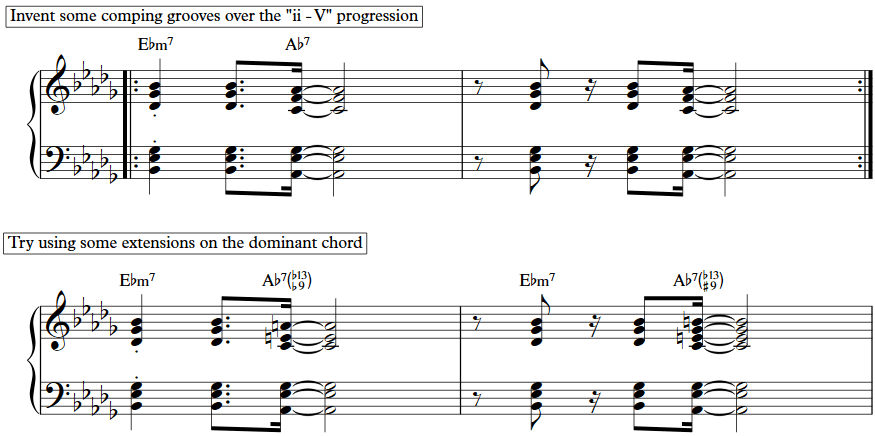Funk harmony is a key element in the genre of funk music, characterized by its use of complex chord progressions and unique voicings. In funk keyboard lessons, students learn how to understand and master funk harmony to create the unique sound of funk music. This means using dissonant chords, syncopated rhythms, and extended chord voicings to create a solid foundation for funk music.
By studying funk harmony, students can develop their skills in creating compelling and engaging chord progressions that drive the rhythmic energy of funk music. It’s an important concept for all musicians to understand, but it’s especially important for keyboard players to understand.
Why?
Because when we hear the term ‘harmony,’ we naturally think of chords – and rightfully so. After all, harmony responsibilities in the form of comping fall exclusively to the keyboard and guitar players in most funk and rock bands.
There is no short cut in learning about funk harmony, comping, and chord progressions. But there are some things that are seen repeatedly in funk keyboard circles.
In this article we figured we’d give you an assist by revealing some of the tips and tricks known by the pros.
Funk Harmony: Dominant 7th Sus4 Chords
Playing dominant 7th sus4 chords is nothing truly new. We see them a lot in funk harmony. But there are some fantastic ways to voice these chords.
For example, when first learning how to play dominant 7th sus4 chords many players usually just play the chord tones. Of course, there’s nothing incorrect about this. However, it’s somewhat ordinary or dull. You can make these chords sound more exciting by using extensions like 9ths and 13ths.

In the “spicier” examples above, notice that the left hand is playing simply root-5th, or root-5th-7th. Notice also that the right hand is playing what looks like a Bb major 7th chord (1st example) and a D minor 7th chord (2nd example). Some students find it helpful to remember these voicings by thinking of either a major 7th chord a whole-step below the root (1st example), or a minor 7th chord a whole-step above the root (2nd example).
Funk Harmony: Some Essential Grooves
Every good funk keyboard player is sort of expected to know some of the most popular funk keyboard grooves. These include tunes like “Use Me,” “Superstition,” “Higher Ground,” “I Wish” (pretty much anything by Stevie Wonder, really), “September,” “Chameleon,” “Watermelon Man,” “Cissy Strut,” and standard groove forms (the blues is a BIG one to be sure you know).
Practice common funk grooves to learn chord progressions often found in funk music. This is helpful for improving your skills.
Funk Harmony: The All-Important “ii – V”
The “ii – V” progression is everywhere in funk music. There are entire tunes that have been written using just these two chords (see Herbie Hancock’s “Chameleon” and Stevie Wonder’s “I Wish.” Both also include a bridge section but the majority of the tunes are based on the “ii – V” groove).
So the lesson here is that you REALLY want to be in full command of the “ii – V” progression.
What is the method for doing that?
A great practice exercise is to find three different ways to play the same thing. For example, here are three different ways to play a “ii – V” progression (Ebmin7 to Ab7):
First…

Second…

Third…
